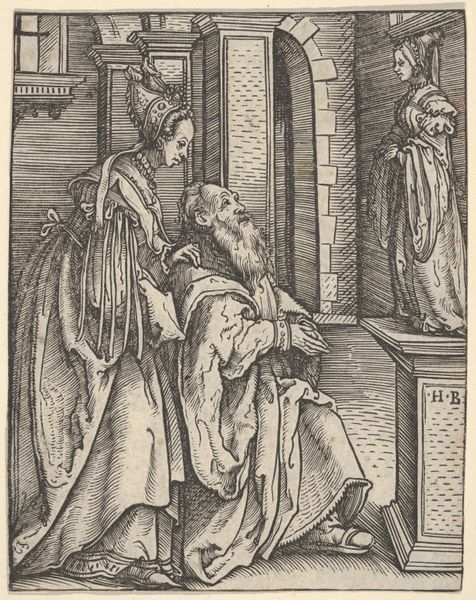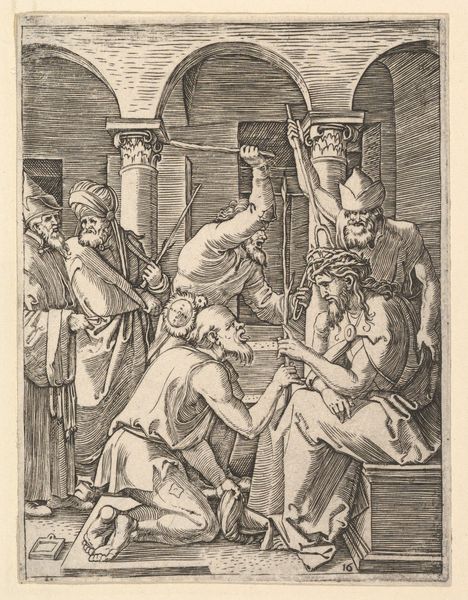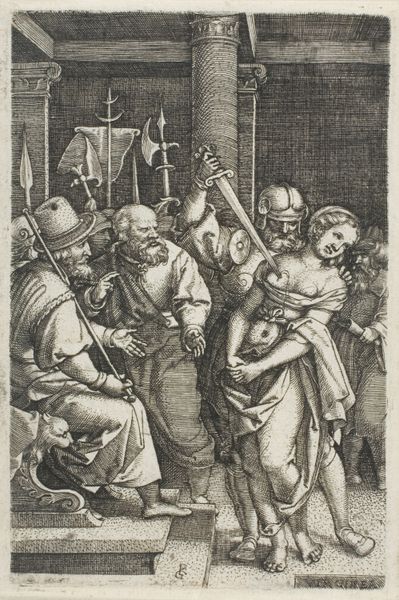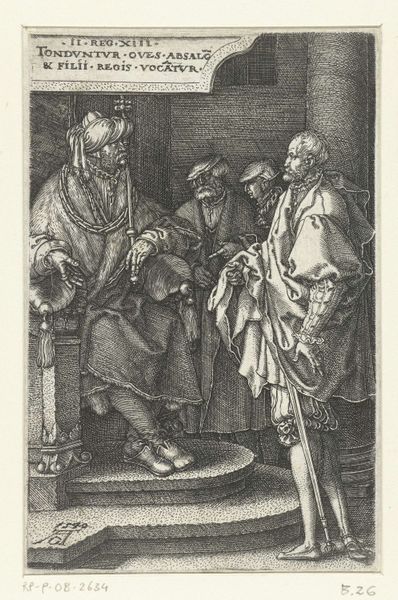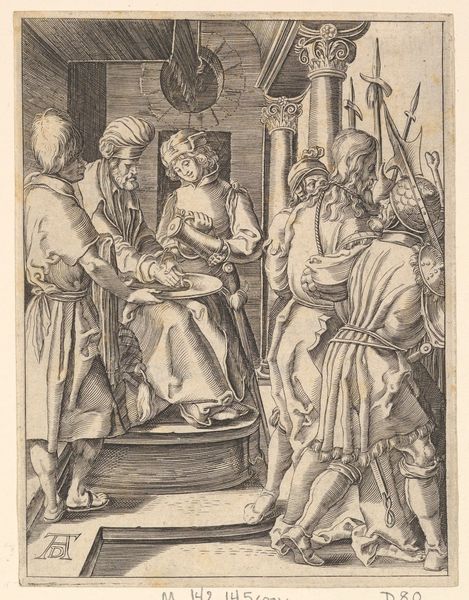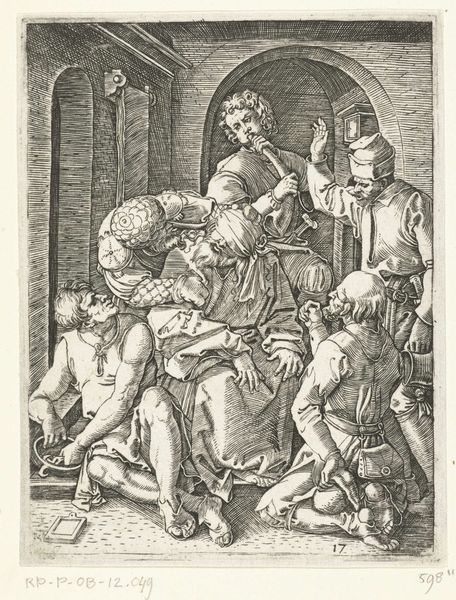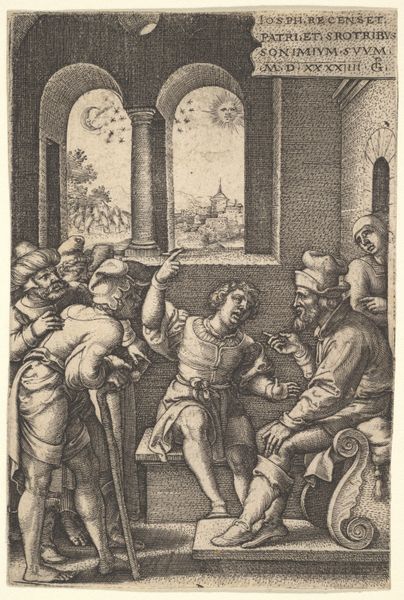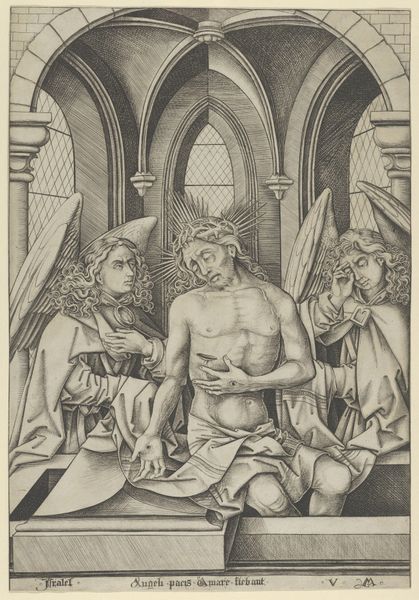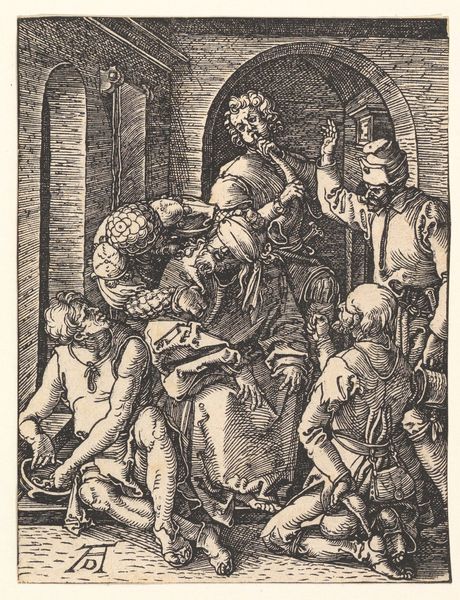
Dimensions: Overall: 4 5/8 x 3 1/16 in. (11.7 x 7.8 cm)
Copyright: Public Domain
Curator: The texture alone suggests that "Ammon and Jonadab," an engraving by Heinrich Aldegrever from 1539, feels severe. Editor: Yes, the etched lines are undeniably crisp and unforgiving. It creates a tension between the men. What is happening? Curator: It depicts a scene from the Second Book of Samuel. Amnon feigns illness, following the advice of his cousin Jonadab, in order to lure his half-sister Tamar into his chamber and rape her. Editor: Aldegrever chooses to freeze this moment, heavy with premonition, emphasizing Jonadab's culpability. The detail of his pointing finger seems almost too direct. Is he egging Amnon on? What purpose does the sword serve? Curator: The sword is more about marking social status; it signifies Amnon’s position as the firstborn son and heir of King David. And, look at the subtle markers that also contribute to the telling of their intertwined story. Editor: The heavy draping and detailed renderings of their clothing signify class and privilege, sure, but the composition’s central void is stark and disturbing. The space surrounding the characters in its formal artificiality almost creates an environment, where betrayal festers. What do we make of that, symbolically? Curator: It could serve as a means of conveying how powerful, how entrenched this specific crime is, facilitated and bolstered by structures of power. I am thinking of contemporary examples like the Catholic Church or even the Kavanaugh hearings, how those events function to perpetuate trauma across generations. Editor: The way he highlights Jonadab’s pointing is intriguing. The gesture reads almost like he’s offering Amnon an opportunity and an out. The faces though. I feel conflicted because I do see that Aldegrever tries to use this symbolic language, while I can tell it still falls back to what was customary in art-making at that point in history. It makes for a complicated experience when interpreting art from centuries ago. Curator: These visual cues serve as a framework through which we can reflect upon the relationship between historical context, artmaking, and the construction of historical meaning. Editor: Absolutely. This detailed engraving from the Northern Renaissance carries so many threads, encouraging deeper reflections about social responsibility.
Comments
No comments
Be the first to comment and join the conversation on the ultimate creative platform.



